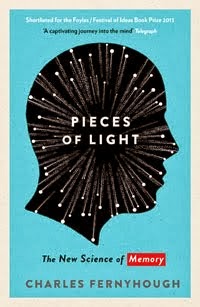As for his sister before him, bedtime for Isaac is a time for pondering the mysteries of consciousness. The other evening, Lizzie was settling him to sleep when, somewhat out of the blue, she quoted a line from The Gruffalo's Child, one of his favourite storybooks. Aha! Oho! Tracks in the snow! Whose are these tracks and where do they go? Nothing in particular had triggered this comment: there were no animal tracks on his orange duvet, and certainly no snow. It was just one of those thoughts that pop into your head for no particular reason, as thoughts do. Irrational they might seem, but unbidden, irrelevant thoughts such as these are occurrences with which, as adults, we are all perfectly familiar.
'Ah,' Isaac observed, 'so now you've got two things going round in your head!'
Baffled, Lizzie asked him to explain. Earlier, he reminded her, she had suddenly started singing the theme tune from a computer game they had been playing. When Isaac had asked her why, she had responded: 'Because it was going round in my head'. Isaac was simply recalling his mother's report of that earlier unbidden thought, and imagining it being joined in its lonely cranial revolutions by this new one.
What do children understand about where thoughts come from? As I noted in an earlier post, young children can get quite confused about the provenance of the contents of their minds. At times, they can give surprisingly materialistic explanations. Just before falling asleep one evening, Isaac mentioned the kids' spy drama MI High, of which his big sister is a fan. Lizzie asked him why he had suddenly started thinking of that. 'The thought was in my neck,' he replied, 'and then it just popped up into my head.' Perhaps he would give the same account of his mother's Gruffalo-themed musings. I envisage little thought pods lying dormant somewhere in the spinal column, and then hatching when local conditions are right, to flood the cortex with colour.
I'm not sure that we adults have much better theories about how thoughts can suddenly break into consciousness like this. One thing we can do, though, is look at what people understand about the controllability of their thoughts. In a series of studies, John Flavell and colleagues have asked this question of young children. One experimental procedure involves introducing children to a special chair called the 'No-Thinking' chair. When you are sitting in this chair, the child participant is told, you can make your thoughts stop altogether. Would you like to try? Recent studies show that, until at around age eight, children really do claim that their stream of consciousness ceases altogether when they are sitting in the chair. Slightly older children, in contrast, recognise that the tap of thoughts cannot simply get turned off. Ideas about mental uncontrollability seem to be very important later in life, in determining how adults respond to intrusive thoughts such as worries, obsessions, and possibly even hallucinations. Understanding the often chaotic flow that runs through our minds is, it seems, a process that gets started early in life.
Later, we ask Isaac whether he can stop these thoughts going round in his head. He sounds optimistic. 'Sometimes, like when I go to sleep, they stop, but when I wake up they start again. And after I've had my breakfast they really start!'





No comments:
Post a Comment